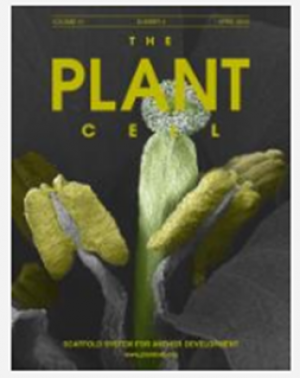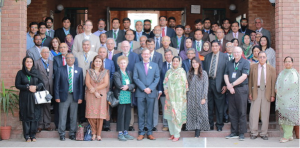A group of researchers from Australia, Germany, Switzerland, and the USA has quantified the effect of climate extremes such as droughts or heatwaves on the yield variability of staple crops around the world. Overall, year-to-year changes in climate factors during the growing season of maize, rice, soy and spring wheat accounted for 20%-49% of yield fluctuations.
In flowering plants, the embryo is surrounded by the endosperm, which facilitates transfer of nutrient between embryo and the mother. The endosperm is distinct as it contains only one copy of the father's genome and two copies of the mother's. This maternal to paternal ratio is remarkable because of its importance to seed viability and development. Seeds with extra genomes that alter this critical ratio undergo a process known as interploidy seed abortion due to defective endosperm development.
A team of scientists published the results of their work that proved that the African Yam's expansion of cultivation started in the Niger River basin. Moreover, the results highlighted that the African Yam actually descended from a forest species. This is contrary to an assumption that sub-Saharan African plants mostly arose in tropical savannahs. Yam is a key crop in Africa, second only to cassava in terms of production. Dioscorea rotundata is the most cultivated yam species, and it has two close wild relatives: one savannah species (D. abyssinica) and one forest species (D. praehensilis).
The world population will be nearly 9 billion by 2050, according to the Food and Agriculture Organization of the United Nations (FAO). Such an increase needs commensurate agricultural production to feed the global population. In view of increasing urbanization and decrease in arable land, vertical increase in crop productivity is required by using all possible technologies related to sustainable agriculture. It is in this context that use of microorganisms in agriculture has become of prime importance.
In an article in Transgenic Research, three researchers from the University of Copenhagen and the Technical University of Denmark argue that risk and unnaturalness of GMO plants cannot justify the restrictive regulation of genetically modified organisms (GMOs) in the European Union (EU). The researchers state that EU regulation may stand in the way of important agricultural innovation that could provide more sustainable and climate-friendly solutions.
"The increasing seed replacement rate in the country and the adoption of hybrid and biotech crops are the major drivers of the market," according to the latest India Seed Sector Analysis market report. Overall, the Indian seed market was valued at USD 2.21 billion in 2018 and is projected to have a compound annual growth rate of 6.4% in the next five years (from 2019 to 2024).
Cotton breeders face a significant challenge as cotton yield is inversely related to fiber quality. As yield improves, fiber quality decreases, and vice-versa. To overcome this challenge, the research team led by Peng Chee from the University of Georgia turned to obsolete cultivars of cotton with ‘exotic' genetic material.
Dialogue is key in improving public perceptions on genetically modified (GM) crops. This emerged during Kenya's first national dialogue on GM crops held on April 24, 2019 at the University of Nairobi. Kenya's Agricultural Research Principal Secretary Prof. Hamadi Boga welcomed the dialogue and affirmed the Government's commitment to support sober and objective discourse on modern agricultural technologies.
Slow canopy wilting (SW) is a water-conservation trait controlled by quantitative trait loci (QTL) in late maturity-group soybeans [Glycine max (L.) Merr.]. Recently, two exotic (landraces) plant-introductions (PI 567690 and PI 567731) were identified as new SW lines in early maturity-groups. Here, we show that the two PIs share the same water conservation strategy of limited-maximum transpiration rates as PI 416937
The United Nations Food and Agriculture Organization (FAO) and the World Food Programme (WFP) today warned that prolonged droughts and heavy rain have destroyed more than half of the maize and bean crops of the subsistence farmers along the Central American Dry Corridor, leaving them without food reserves and affecting their food security.


 Curently online :
Curently online :
 Total visitors :
Total visitors :









